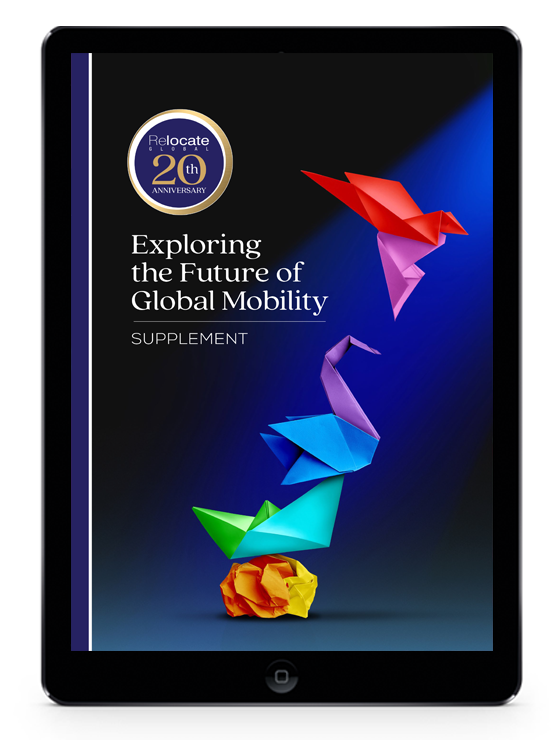Global mobility: Ideas of policy changes to reduce carbon footprint
Climate change is having a devastating impact across the world. Global Mobility can take action to contribute towards reducing carbon emissions by changing its approach to the types of assignments undertaken and the policy components that support them. Dr Sue Shortland provides some ideas on approaches that might be taken.
Over the past several years we have seen a change in the types of assignment used to deliver the resourcing of positions internationally. Prior to the pandemic, a trend began that saw the shortening of assignment lengths such that typical three year or longer long-term assignments decreased in length. There was also a trend emerging towards an increasing use of short-term, commuter and other flexible assignment types. All of these created global mobility programmes that increased the use of travel and created greater churn in take-up of housing locally in the host location. In turn, these actions increased the carbon footprint associated with global mobility.
The pandemic created conditions for a major change in the use of global mobility, resulting in a massive increase in the use of virtual assignments and remote working. With reduced travel, carbon emissions fell. As the effects of the pandemic have lessened, so we are beginning to see a return to the increasing use of physical mobility. This brings with it an increased contribution to global warming. This should raise warning flags for organisations committed to lowering their carbon footprint and increasing sustainability.

REVIEWING GLOBAL MOBILITY ASSIGNMENT TYPES
In order to help to promote a reduction in carbon emissions, organisations should consider carefully the types of assignment that are best suited both to business needs and environmental sustainability. Commuter assignments, for example, result in increased travel and the carbon emissions that flow from this.
Using multiple short-term assignments also leads to greater carbon emissions through travelling than might be emitted from a long-term assignment, which does not require the need for frequent travel to other locations.
Striking a balance between the use of virtual assignments and physical mobility can play a major role in reducing the need for global travel. Long-term assignments may prove to be more effective in reducing travel requirements than commuter and short-term mobility. One-way transfers or local resourcing might reduce travel carbon emissions even further.

The use of business travel within assignments to service different operations also needs to be considered. Is this really necessary or could such mobility be replaced through virtual working? Hybrid working abroad whereby assignees work part of the time from home rather than commuting into the office or worksite can also help to reduce emissions through local travel.
GLOBAL MOBILITY POLICY COMPONENTS
Organisations might also consider aspects of their international mobility policies and how these might be tailored to reduce carbon emissions. The best way to do this is to look at each individual policy element and consider what steps might be taken to make it more carbon neutral.
Striking a balance between the use of virtual assignments and physical mobility can play a major role in reducing the need for global travel.”
So, for example, if we take air travel to and from the host location at the beginning and end of the assignment, the carbon footprint from economy air travel is lower than that of first or business class. Organisations might wish to review their policies on the distance or time of flights that attract either first or business class travel such that only the very longest journeys offer this benefit. Alternatively, economy class might be applied to all.
Air travel also applies to home leave. Once again the class of travel could be reviewed but, in addition, the number of home leave trips might also be reduced. For example, if an organisation grants home leave every year while an employee is on a long-term assignment, this may be reduced to, for example, two (possibly longer) trips in three years rather than a (shorter) trip every year. Organisations might also wish to review their vacation policy for international assignees. For example, some organisational policies provide travel days either side of the annual vacation period in order to enable employees and their families to fly home and then back to the host location without eroding their home leave allowance. Longer travel periods linked to annual vacation might be introduced to enable employees and their families to travel by rail rather than air.
A further area that might be considered in relation to travel concerns is local transport. If the policy provides for a car for use locally, this might be designated as an electric vehicle rather than a petrol or diesel vehicle. Organisations might also give consideration to providing an allowance to support the use of local public transport rather than the provision of a car.
Home search could be carried out virtually in the first instance rather than travelling to visit properties for the initial screenings. The initial viewing of schools for children might also be conducted online, such that the travel required to view schools in person is reduced. These measures again help to lower the travel carbon footprint.
Eco-friendly properties can contribute hugely to reduction of carbon emissions. Housing should be both energy efficient and also enable charging of electric vehicles. Hence, with respect to housing for international assignees and their families, the accommodation allowance or the provision of company property could be linked to individuals residing in eco-friendly, carbon efficient accommodation. International assignment policies also usually make provision for temporary living. Once again, the green credentials of the accommodation available should be considered.
Organisations might also wish to consider how they support payment of utilities – utilities allowances might be tailored to encourage individuals and their families to be more efficient in their use of services within their properties. This is especially pertinent given the rising costs of energy.
A further policy area that might be considered for review concerns the transport of household goods. An analysis can be carried out to explore the benefits of shipping household goods to the new location versus providing furnishings locally.
It is important to remember that replacing household goods in the host location for each new arrival is not sustainable and consideration might therefore be given to furniture rental rather than replacement for each newly relocating family. Support for recycling household goods can also be considered.
A further area for consideration concerns a review of the cost of living allowance arrangements. Standard purchaser indices aim to provide compensation such that standards of living are replicated in the host location – this means that goods and services costs are based upon home country equivalents. This can potentially mean that assignees and their families replicate their home country consumption patterns by purchasing branded goods that they are used to at home. These are typically not only expensive but also represent considerable food miles as products need to be flown or shipped around the world to the destination location. The use of an efficient purchaser index is not only more cost-effective for the company but also encourages assignees and their families to buy local produce and non-branded goods. These, if sourced locally, reduce the food miles associated with the transport of consumables from abroad
THIRD PARTY LINKS
Many organisations work with third parties to manage their international assignment policy implementation. A further action that organisations can take to help reduce climate change is to partner with organisations that are committed to sustainability. This also provides opportunities to learn from each other in order to exploit more sustainable and eco-friendly options. Organisations are thus encouraged to consider sustainability targets and carbon reduction activities when reviewing potential partners during the vendor selection process.
To achieve an overall mindset of sustainability requires the development of a green culture.”
Save the date
The Innovation Festival for Global Working
Join us on 8 June 2023 in Kent, UK
CREATING A GREEN CULTURE TO REDUCE CARBON FOOTPRINT
It is important to remember that in order to achieve even minor changes in terms of assignment deployment options and policy review, this may well require a change of culture. Businesses are used to acting in a certain way and individuals expect particular benefits and approaches. To achieve an overall mindset of sustainability requires the development of a green culture. This may not be achievable overnight but certainly by taking action to promote sustainable approaches with explanations given of why policy elements are changing and the effects they can have on moving towards carbon neutrality can go a long way to supporting the mindset required for a greener future.
It is also necessary to monitor actions taken and review whether they are successful. This requires a robust tracking and data analytics system whereby organisations are able to draw upon relevant data to determine whether changes made to assignment types and policy components have actually made a positive difference in terms of climate credentials, meeting business needs, and ensuring a good assignee experience. A balance has to be struck between achieving a lower carbon footprint from the global mobility programme and a successful business, employee and family outcomes.
We want to hear from corporates and suppliers across global mobility and international organisations about how you are addressing climate change. Email us at editorial@relocatemagazine.com


 Magazine
Magazine


